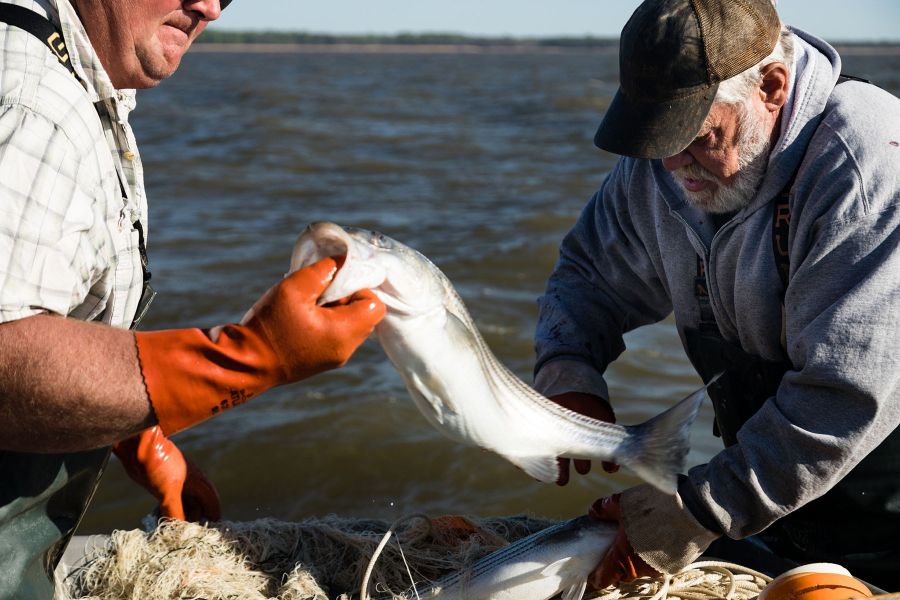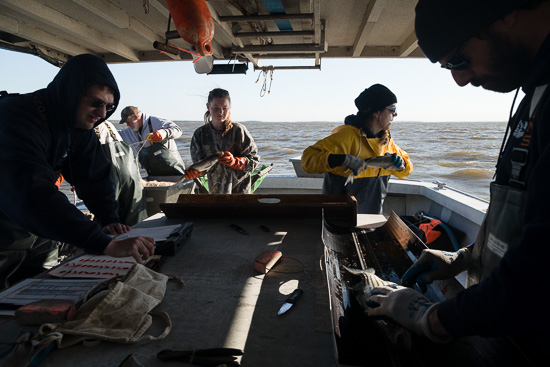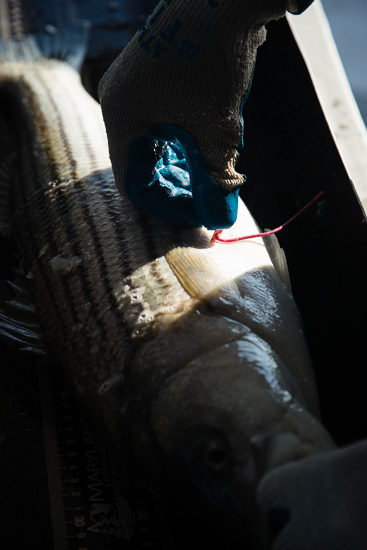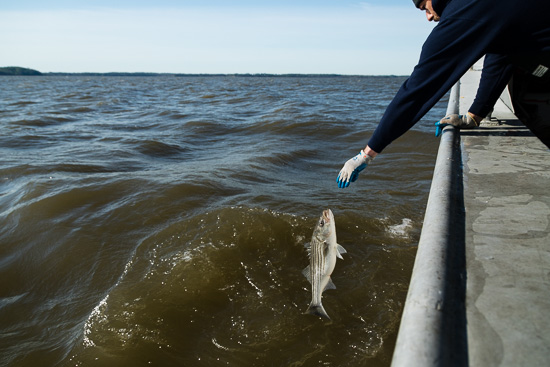Rockfish return to find a changing Chesapeake region
As region develops, striped bass face new challenges

Each spring, as waters warm along the Atlantic coast and in the Chesapeake Bay, striped bass begin to migrate. Otherwise known as rockfish or stripers, striped bass are anadromous: they spend most of their adult lives in the ocean but travel back to the freshwater where they were born to spawn. As the fish make their return to the rivers of Maryland and Virginia, recreational fisherman celebrate with striped bass trophy season, hoping to catch and release the largest fish and spending time on the water with a tradition that spans generations.
Rockfish have served as one of the most popular commercial and recreational fish in the Chesapeake Bay for hundreds of years. When Captain John Smith traveled the estuary in 1614, he wrote of seeing waters so full of “the Basse”—believed by many to mean striped bass—that a man might walk across their backs without getting his shoes wet.
For years, rockfish served as an iconic, ever-present Chesapeake species for both food and sport. But in the 1970s and 80s, the striped bass fishery collapsed. Between 1973 and 1983, commercial and recreational catches fell from a record-setting 14.7 million pounds to just 1.7 million pounds. By the late 1980s, states across the region had put moratoria in place in an attempt to help the species recover. After responding well to harvest restrictions, the population was considered fully restored in 1995. Today, active management and a Bay-wide quota for recreational and commercial striped bass fisheries have helped the species remain at a sustainable level.
The recovery of striped bass in the Bay is often seen as one of the estuary’s great success stories. But environmental pressures could put strain on habitats used by spawning adults and young striped bass, threatening the long-term health of the species. As the largest striped bass nursery area on the Atlantic coast, experts estimate that up to 90 percent of the Atlantic striped bass population uses the Bay and its tidal tributaries to spawn. Healthy habitats are key to the survival of young striped bass, a sustainable population and a robust commercial and recreational fishery in the Bay.

From year to year, striped bass reproduction sees considerable natural variation. This means that the overall population relies on successful spawning years—which require suitable habitat—to compensate for below-average years. But threats like warming temperatures, for example, could disrupt the timing of migration and spawning and alter what areas are viable habitat for these life processes.
A less-discussed but equally significant threat to rockfish habitat, experts say, is land use—particularly development and urbanization. As the region’s human population grows, more farm and forest land is being converted into buildings, roads, parking lots and other paved surfaces. These impervious surfaces cause a surge in the amount and intensity of polluted runoff, which can erode streambanks, transport toxic contaminants and nutrient and sediment pollution into waterways and significantly alter the temperature of rivers and streams.
As the landscape is altered, these changes can turn previously suitable spawning and nursery areas into less productive habitat. Striped bass are sensitive to habitat changes because, when spawning and as larvae, they become concentrated in relatively small geographic areas. Any disturbances in those areas could potentially impact a large number of striped bass from across all life stages: from eggs to larvae to spawning adults.


When researchers overlaid a map of the Bay’s striped bass spawning areas with a map of projected development, the results showed all spawning habitat to be under moderate to very high development pressure. The Potomac and James Rivers, for example, are among the largest spawning areas in the Bay, and projections of growth show those areas could develop up to 10 percent impervious surface cover by 2020. Fisheries experts consider impervious surface cover at a level of five percent or below the target for a local region, but levels below 10 percent can still help keep the striped bass population stable.
Slight degradations in habitat can be offset by restoration efforts—although, once lost, there’s no guarantee habitat quality can be restored. By conserving farm fields, forests, wetlands and natural shorelines, land managers can help sustain healthy striped bass habitat. Concentrating the development that does occur in and around already-developed areas—a technique known as “smart growth”—can also help ease the effects of development, as can reducing the amount of runoff through green infrastructure like rain gardens, green roofs and permeable pavement.
Each year, researchers in Maryland and Virginia survey spawning and juvenile striped bass to inform fishery management decisions, track population size and measure spawning success. So far, the results of these surveys don’t have experts alarmed. Although results of Maryland’s 2016 juvenile striped bass survey were well below the long-term average, successful spawning years in 2011 and 2015 are expected to compensate for the below-average year. Meanwhile, experts continue to work to better understand how land use changes and other stressors may impact these numbers in the future, helping to ensure a robust rockfish population for years to come.
To view more photos, visit the Chesapeake Bay Program's Flickr page.

Comments
There are no comments.
Thank you!
Your comment has been received. Before it can be published, the comment will be reviewed by our team to ensure it adheres with our rules of engagement.
Back to recent stories